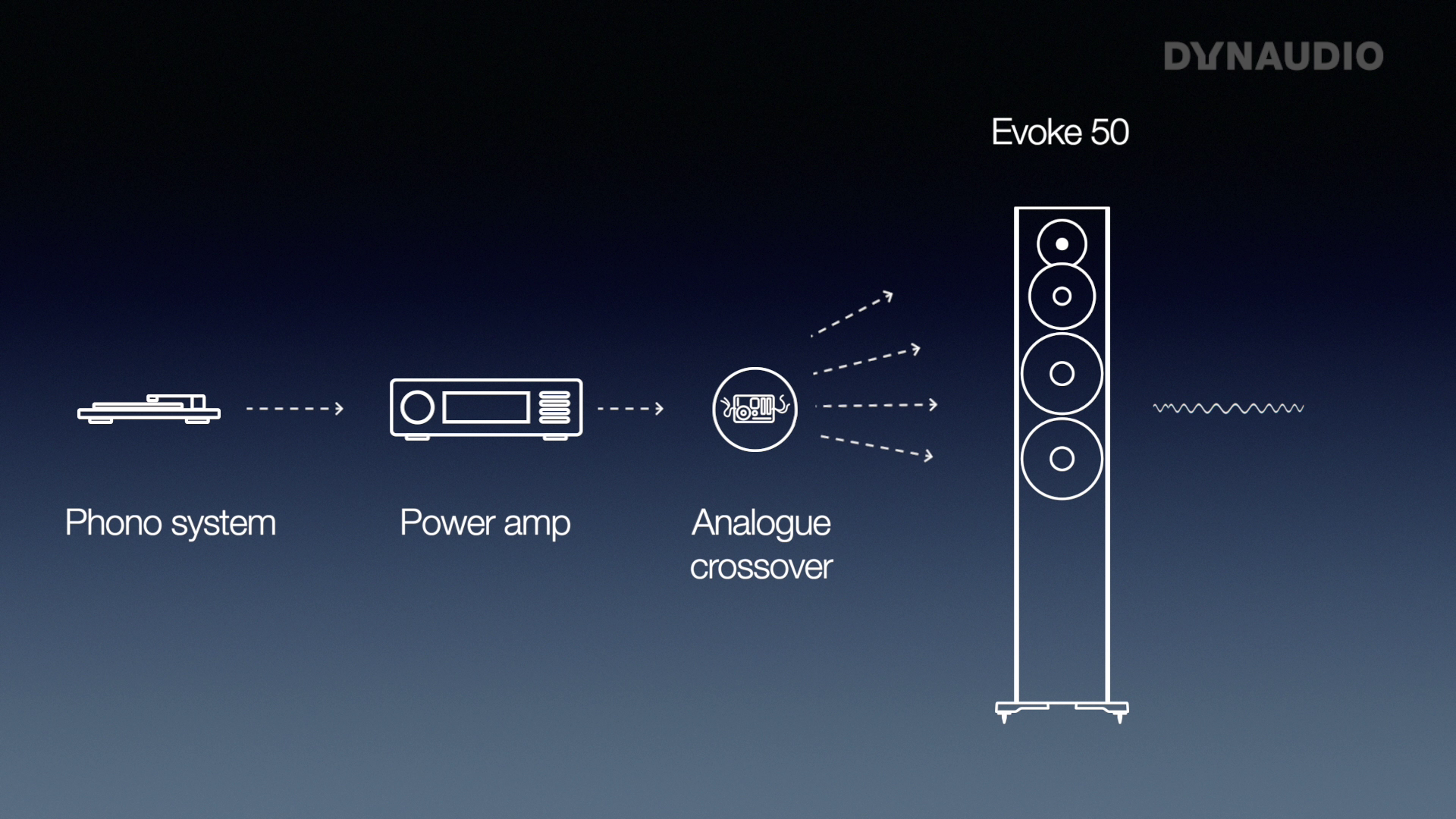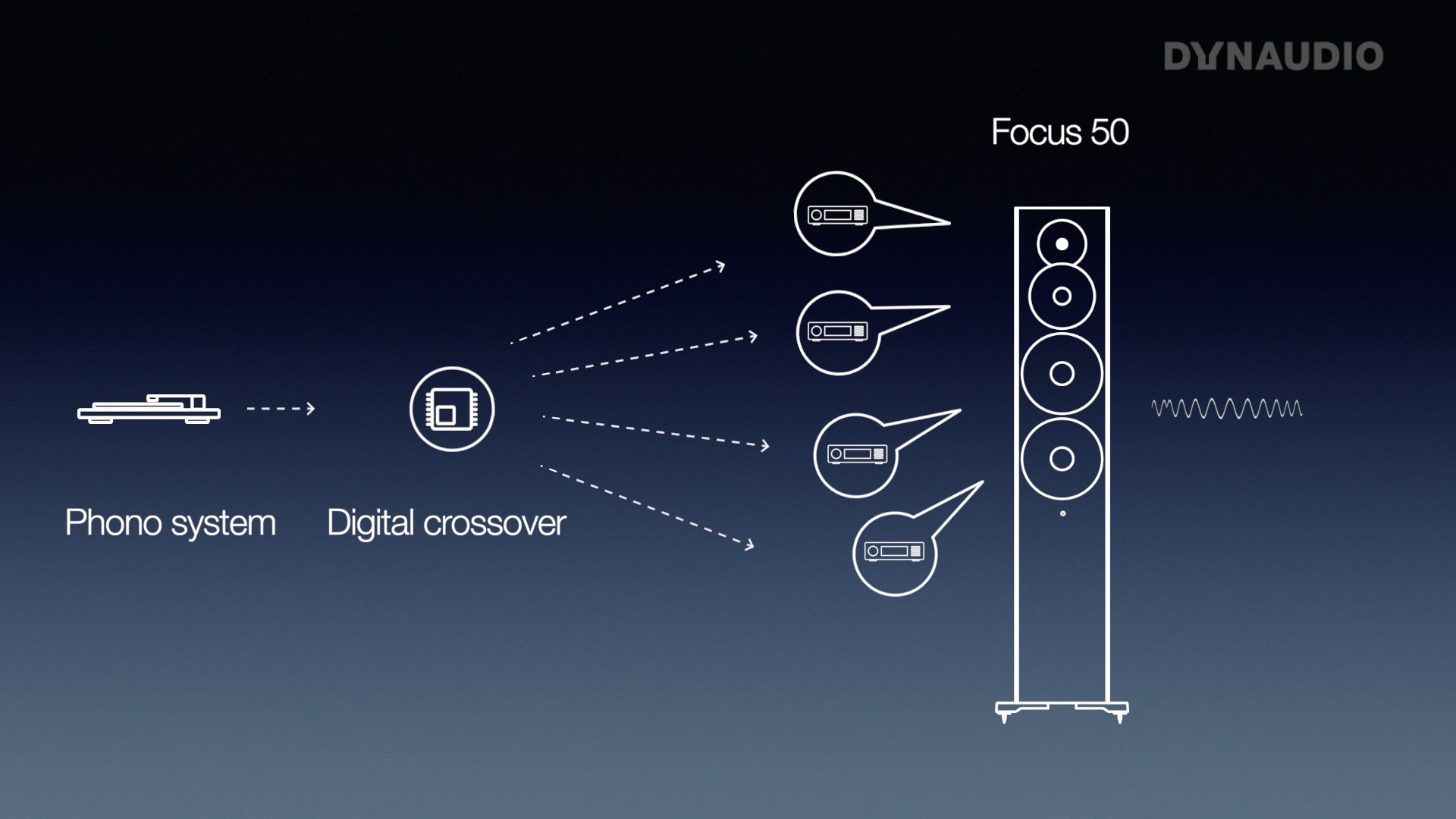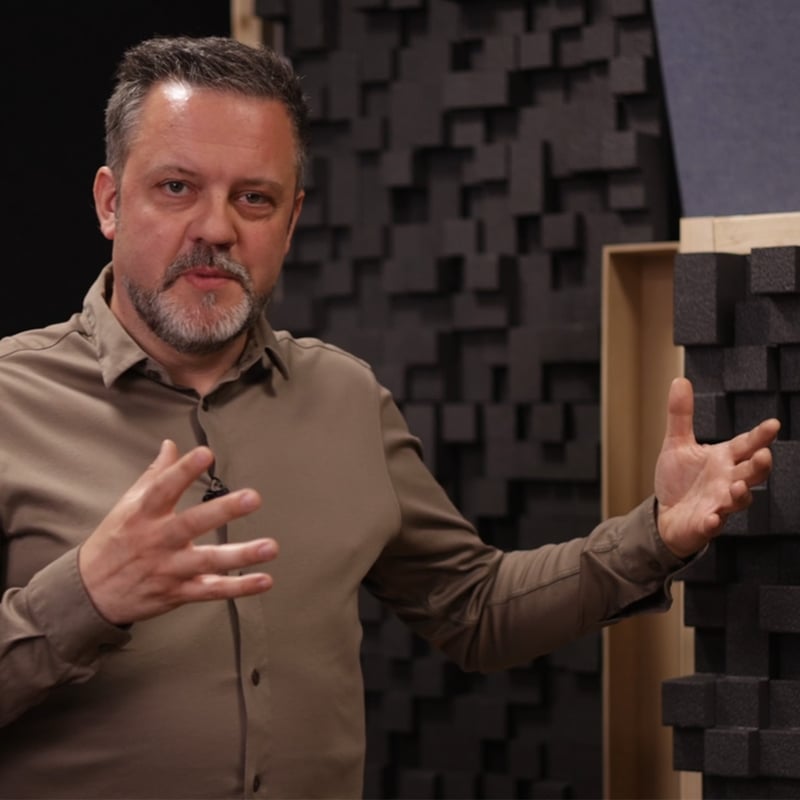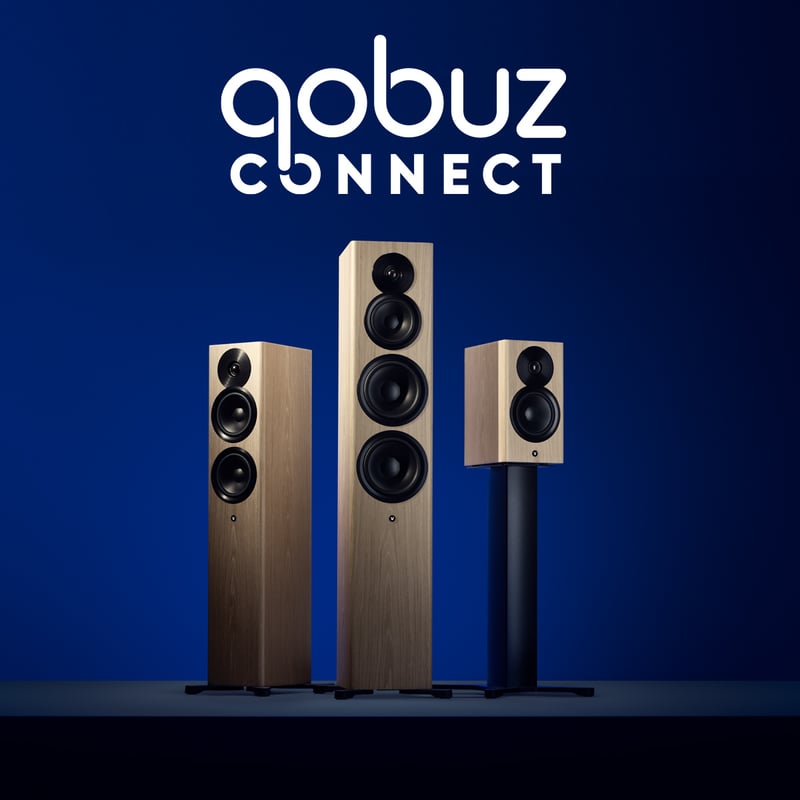This time on Ask The Expert, we'll be discussing whether digital crossovers really are an improvement over analogue crossovers or not. And, as you might expect, the answer is anything but a straightforward "yes" or "no." Let's explore in greater detail.
Don't forget, that the majority of questions discussed on Ask The Expert come directly from you, our customers. We receive a lot, but we could always use more, so keep 'em coming by submitting your them via the "Send us your questions" form at the bottom of this page, and we may indeed feature them in a future episode!
Whilst still using the same amplifiers and DAC, what can be gained by replacing a passive crossover with a digital one?
In order to answer this question, it might be prudent to start by discussing the differences between a digital crossover and a passive crossover.
If we start with a passive crossover, you would typically drive a passive loudspeaker using an amplifier, which sends a signal into a loudspeaker and then, inside of the speaker itself, the (passive) crossover divides this incoming signal up, sending the different frequencies to the appropriate driver for that frequency. (see figure 1.)
In a passive crossover, there are (as the name suggests) passive components, such as resistors, capacitors, and inductors, and each of these components serves a function which causes the signal to be divided up and diverted to each of the drivers.
figure 1.
In a digital crossover, the crossover, in terms of the signal path, is situated before the amplifiers. And yes, you read that right, amplifiers, in plural. The signal enters the speaker, is dived according to frequency band by the crossover, and then sent to a separate amplifiers – one for each driver. (see figure 2.)
To summarise; in an active speaker you have an amplifier for each driver, but the amplifiers come into play after the crossover, which is rather different to the method used in passive speakers.
figure 2.
Let's now talk a little bit about what the benefits of a digital crossover might be. But first, it's important to point out that lots of decisions are made regarding the design of a speaker, on the basis of whether that speaker passive or digital, and that simply taking a passive speaker and exchanging those passive components with active components does not automatically make it a good active speaker.
But – for the sake of this discussion – if we assume that we are using the same basic speaker design for all of this and we were to install a digital crossover, one of the immediate acoustic benefits would be better control over phase and time. Not only would you have the ability to divide the signal by frequency for each driver, but also the ability to shift these frequency bands in time, which can help enormously in optimising the coherence between the individual drivers and how and when the sound reaches your ears.
The digital world also opens up for a lot of other more advanced possibilities in terms of altering and/or optimising the signal, without needing to make that signal longer or more complex.
By contrast, in a passive system, making the same kind of tweaks to the signal requires that you exchange, add or remove physical analogue components, which is clearly a more complicated and laborious process then simply altering an algorithm: in the digital domain with a digital filter, you can do whatever you want with the same amount of components, and the same signal.
A digital crossover is also immune to voice coil power compression. The same cannot be said for a passive crossover where – when you are driving a loudspeaker, causing the voice coil to heat up and its response to change – you are effectively also changing the crossover somewhat. Simply put, a passive crossover doesn't work the same when you're playing at low volume as it does at high volume. A digital crossover does, or at least can be manipulated to do so, and this is also one of its major advantages.
Although not directly related to the crossover, another few things worth mentioning as benefits of a digital system are things like driver protection, for instance. Frequency extension being another, where it's possible to retrieve lower frequencies at lower volumes. A digital system is also more efficient, because you are able to use more of the power to actually drive the loudspeaker, compared with the energy loss that occurs in the numerous components of a passive system.
Lastly – and perhaps most surprisingly – a digital crossover can actually be cheaper than a passive crossover. If you look at a passive crossover itself, the components can be quite expensive – especially if you are assembling a high-quality passive crossover. A digital crossover, by contrast, can be done very cheaply. Taking a digital system as a whole, it might not be cheaper overall, due to the fact that you need an individual amplifier for each of the drivers, but the crossover itself is typically cheaper.
With all of these advantages of digital crossover, what then are the downsides? Why do we still use passive crossovers in most speakers? There are of course some good reasons for this, and one of them is that a digital crossover can be more complex to design. There are a lot of things to take into consideration when designing a digital crossover, such as the fact that it generally requires a fixed amplifier choice i.e it restricts you to one specific amplifier in complete, self-contained system. As soon as you use an unknown, external amplifier with a digital crossover, you are no longer able to optimise the crossover. Whereas it is possible to use a separate outboard digital crossover with an amplifier of your choosing, you would effectively be losing a lot of the advantages of digital crossovers mentioned in this article.
As we mentioned at the beginning of this article, it's not really possible to simply take a passive loudspeaker and replace that crossover network with a digital one with the exact same properties. It simply won't work. Because of the way that passive components work together with the speaker drivers in a passive system, by replacing that like-for-like with a digital crossover, you are disrupting the interaction between the crossover and the driver.
In conclusion and to summarise; digital crossovers do have the potential to deliver better performance, but it's not a guaranteed. You still have to fine tune it properly.
Send us your questions
Don't forget to submit your questions to our experts via the form below – they might just get featured in a future episode of Ask The Expert!







